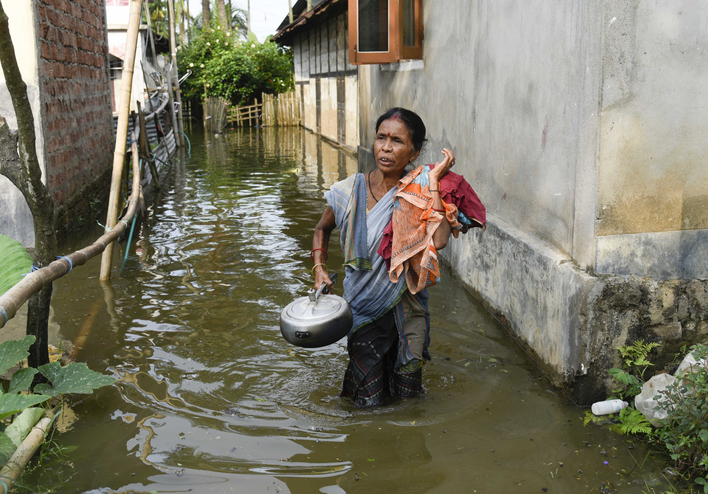Progress on the United Nations goals is often assessed using the widely known ‘headcount ratio’. This column argues that such an intuitive and popular measure is insufficient since different regions might face different realities in terms of deprivations within each indicator. This is demonstrated, for example, in the case of sanitation deprivation by the contrasting experiences of Dhaka and Rajshahi in Bangladesh. The authors propose new measures that can help to ensure that the poorest are not ‘left behind’.
The United Nations pledged that ‘no one would be left behind’ in the 2030 Agenda for Sustainable Development. To achieve this promise, the institution set a number of goals and targets.
For example, Sustainable Development Goal (SDG) Target 1.2 requires reducing poverty in all its dimensions besides eradicating extreme monetary poverty, while SDG Target 2.2 requires ending all forms of malnutrition, and SDG Target 6.1 requires achieving universal and equitable access to safe and affordable drinking water for all.
Fulfilling the pledge effectively means ensuring that overall progress makes a priority of the poorest and most needy. Poverty is multidimensional and deprivations ought to be observed together. But it may also be of policy relevance to focus on a particular dimension or indicator.
The best-known poverty metric is the ‘headcount ratio’, which is the proportion of the population that fails to meet a subsistence threshold. While easy to understand, this index ignores the depth of deprivations.
In other words, the headcount ratio does not capture any improvement or deterioration in the situation of the deprived population unless they cross the subsistence threshold. Moreover, it fails to make a priority of assisting the poorest among the poor.
Let us provide an example to demonstrate how the headcount ratio may fail to capture the depth of deprivations, based on our analysis of sanitation deprivation in Bangladesh. We classify the sanitation facilities into five ordered categories based on the service ladder approach proposed by the Joint Monitoring Programme for Water Supply, Sanitation and Hygiene of the World Health Organization and UNICEF.
The five categories are: open defecation, unimproved, limited, basic unsafe, and improved. Only those experiencing improved sanitation facilities are regarded as being free from deprivation. Those experiencing the rest of the categories are deemed deprived (with open defecation representing the worst form of sanitation deprivation).
We document an overall reduction in the headcount ratio of sanitation deprivation—that is, the proportion of people in each of the four deprivation categories. But a comparison between two of the country’s provinces—Dhaka and Rajshahi—provides striking insights. In 2007, the headcount ratio was very similar in both provinces. But the proportions of people in the two poorest categories were higher in Rajshahi than in Dhaka. This crucial difference across deprivation categories (depth) goes unnoticed by the headcount ratio.
Such a limitation has crucial policy implications for prioritising the poorest. On the one hand, simply improving the situation of those who are least deprived, while leaving out those experiencing the worst form of deprivation, will suffice to reduce the headcount ratio. In contrast, if policy-makers improve the situation of the poorest, their efforts are not necessarily acknowledged by this measure, thereby discouraging them from this noble course of action.
How then should we assess poverty without ignoring the depth of deprivations or neglecting the poorest if development indicators have more than two ordered categories?
Normally, the data for an ordinal variable consist of the proportion of the population in each of the ordered categories. These proportions in different categories can be used to construct poverty measures so that they are weighted sums of population proportions in deprivation categories. The values of these weights depend on the order of the corresponding categories.
Like the headcount ratio, these measures are intuitive. But unlike the headcount ratio, they are sensitive to the depth of deprivations and are tailored to ensure that priority is given to the poorest among the poor. Thus, our measures can also assist in the targeting and evaluation of poverty alleviation programs.
Now, one could question the need to aggregate the information on deprivation categories, opting instead simply to consider the relative frequencies of the population experiencing deprivation within each ordered category, separately. The latter approach is reasonable when the indicator has only a few deprivation categories; or when the required number of poverty comparisons is relatively small.
Otherwise, such a piecemeal approach becomes cumbersome. Even with only the four deprivation categories used in our illustration, an analysis of deprivation dynamics across six provinces of Bangladesh over three years would involve comparing a staggering 72 data points.
Alternatively, in order to avoid a multitude of comparisons, one could focus on those suffering the most severe category of deprivation. But this route ignores progress or deterioration in other deprivation categories.
Our proposal provides a solution that keeps the number of comparisons manageable, while preserving sensitivity to the depth of all forms of deprivation. It prioritises the needs of the poorest without neglecting the predicament of those less deprived.
To the extent that global efforts toward poverty eradication are influenced by our perception of the world, and that the latter is shaped by the metrics we choose, the need for ethically sound poverty measures cannot be overstated.







